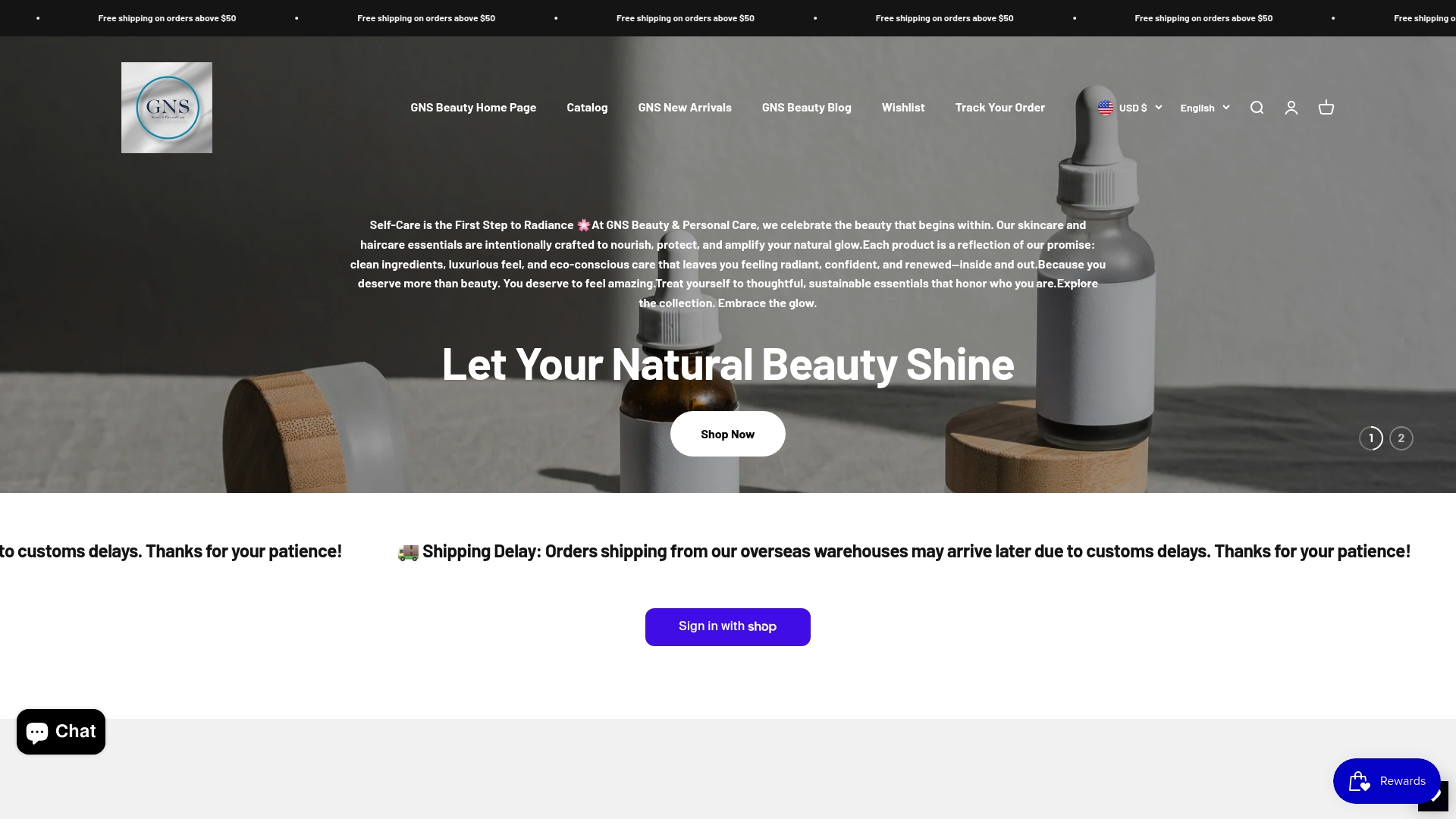DIY face masks made from simple kitchen ingredients are changing the way people think about skin care. You might expect these treatments to be just a passing trend or something for a rainy Sunday, but think again. Homemade face masks let you control every ingredient, offering a gentler, cleaner, and often far more effective approach than many store-bought options loaded with chemicals. The real surprise is how much your skin can benefit from the foods already on your pantry shelf.
Table of Contents
- Understanding The Benefits Of Diy Face Masks
- Basic Ingredients To Use From Your Kitchen
- Mask Recipe 1: Avocado And Honey Hydrating Mask
- Mask Recipe 2: Oatmeal And Yogurt Soothing Mask
- Mask Recipe 3: Banana And Olive Oil Nourishing Mask
- Mask Recipe 4: Coffee And Coconut Oil Exfoliating Mask
- Mask Recipe 5: Turmeric And Milk Brightening Mask
- Tips For Applying And Removing Face Masks
- Safety Precautions When Using Diy Masks
Quick Summary
| Takeaway | Explanation |
|---|---|
| DIY masks are customizable skincare solutions | You can personalize ingredients to target your unique skin needs effectively. |
| Use fresh kitchen ingredients for safety | Opt for natural ingredients to minimize chemical exposure and potential skin reactions. |
| Always perform a patch test before use | Testing small areas prevents allergic reactions and ensures compatibility with your skin. |
| Follow proper application and removal techniques | Correct usage enhances the effectiveness and reduces risk of irritation during masking. |
| Keep a skin journal for tracking reactions | Documenting your experiences helps identify beneficial ingredients and avoid irritants. |
1: Understanding the Benefits of DIY Face Masks
Creating your own face masks using common kitchen ingredients isn’t just a trendy self-care activity it’s a powerful approach to skincare that offers numerous advantages. Homemade face masks provide a natural, cost-effective alternative to expensive commercial products, allowing you to customize treatments specifically for your unique skin needs.
One significant benefit of DIY face masks is their pure and minimalistic ingredient profile. Unlike store-bought masks that often contain complex chemical compounds, kitchen-based masks use whole food ingredients your body naturally recognizes. This means reduced risk of adverse skin reactions and a more holistic approach to skincare.
Key advantages of DIY face masks include:
- Complete control over ingredient quality
- Immediate accessibility of ingredients
- Customization for specific skin concerns
- Elimination of unnecessary preservatives
According to Cleveland Clinic, understanding your skin type is crucial when selecting ingredients. Some natural components like honey offer antibacterial properties, while yogurt provides gentle exfoliation. Oatmeal can soothe sensitive skin, and fruits like papaya contain enzymes that help remove dead skin cells.
Moreover, creating your own face masks connects you more intimately with your skincare routine. You become aware of exactly what touches your skin, transforming a simple beauty treatment into a mindful self-care ritual. The process of mixing and applying a mask you’ve crafted yourself can be incredibly therapeutic, offering moments of relaxation and personal connection.
By embracing DIY face masks, you’re not just treating your skin you’re participating in an age-old tradition of natural beauty care that prioritizes wellness over quick fixes. Each mask becomes a personal experiment in understanding your skin’s unique needs and responding with compassion and knowledge.
2: Basic Ingredients to Use from Your Kitchen
Kitchen pantries are treasure troves of skincare ingredients, offering natural alternatives to commercial beauty products that can be both effective and gentle. Understanding which common foods can benefit your skin transforms ordinary ingredients into powerful skincare solutions.
Fruits and vegetables are particularly remarkable for their skin-nourishing properties. Avocados, packed with healthy fats and vitamins, provide deep moisturization and can help repair skin barriers. Bananas offer potassium and natural humectants that smooth and hydrate skin texture. Papaya contains enzymes that gently exfoliate, while cucumber provides cooling and anti-inflammatory benefits.
Key kitchen ingredients ideal for face masks include:
- Honey (antibacterial and humectant)
- Yogurt (lactic acid for gentle exfoliation)
- Oatmeal (soothing and anti-inflammatory)
- Egg whites (tightening and protein-rich)
- Turmeric (brightening and anti-inflammatory)
According to Harvard Health Publishing, natural ingredients can be less harsh than synthetic skincare products. Dairy products like yogurt contain lactic acid that helps remove dead skin cells, while egg whites can temporarily tighten pores and provide a mild lifting effect.
Protein-rich ingredients such as eggs and milk offer unique benefits. Egg whites contain proteins that can help tone skin and reduce excess oil, making them excellent for individuals with combination or oily skin types. Milk and buttermilk provide gentle chemical exfoliation through their natural alpha-hydroxy acids.
Spices and herbs from your kitchen can also play a significant role in skincare. Turmeric, for instance, has powerful anti-inflammatory and antioxidant properties that can help reduce redness and combat skin aging. Cinnamon can stimulate blood circulation, potentially giving your skin a healthy glow.
Remember that individual skin reactions can vary, so always patch test new ingredients and listen to your skin’s unique needs.
3: Mask Recipe 1: Avocado and Honey Hydrating Mask
The avocado and honey hydrating mask is a powerhouse treatment for dry, dehydrated skin, combining two extraordinarily nourishing ingredients that work synergistically to restore moisture and promote skin health. This simple yet effective mask harnesses the natural healing properties of each component to deliver intense hydration and gentle nourishment.
Avocados are nutritional superstars for skincare, rich in essential fatty acids, vitamins E and C, and potent antioxidants that help protect and repair skin cells. The fruit’s natural oils penetrate deeply, providing long-lasting moisture without clogging pores. Honey complements avocado perfectly, offering antibacterial properties and acting as a natural humectant that helps skin retain moisture.
Mask preparation steps:
- Select a ripe, soft avocado
- Use raw, organic honey for maximum benefits
- Mash ingredients until smooth
- Apply evenly to clean face
- Leave on for 15-20 minutes
According to Medical News Today, avocados contain compounds that can help protect skin from ultraviolet radiation and support collagen production. The natural oils in avocados are similar to the skin’s own sebum, making them exceptionally compatible with various skin types.
Skin types that benefit most from this mask include dry, mature, and sensitive skin. The combination of avocado and honey provides gentle yet profound hydration, helping to smooth fine lines and improve overall skin texture. For those with oily or acne-prone skin, use this mask sparingly and in small quantities.
Pro tip: Always perform a patch test before applying the mask to your entire face. Some individuals might have sensitivity to specific ingredients. Apply a small amount to your inner forearm and wait 24 hours to ensure no adverse reactions occur. This precautionary step helps prevent potential allergic responses and ensures a safe, enjoyable skincare experience.
4: Mask Recipe 2: Oatmeal and Yogurt Soothing Mask
The oatmeal and yogurt soothing mask is a miracle treatment for sensitive and irritated skin, offering a gentle yet powerful approach to skin recovery and nourishment. This combination creates a calming, nutritive mask that addresses multiple skin concerns simultaneously, making it an ideal solution for those struggling with inflammation, redness, or uneven skin texture.
Oatmeal brings remarkable therapeutic properties to this mask. Packed with beta-glucans and antioxidants, it provides exceptional anti-inflammatory benefits that can calm skin reactions and reduce overall sensitivity. Its natural saponins offer mild cleansing action, helping to remove excess oil and impurities without stripping the skin’s protective barrier.
Mask preparation essentials:
- Use plain, unflavored organic yogurt
- Choose finely ground colloidal oatmeal
- Ensure ingredients are at room temperature
- Mix until achieving a smooth consistency
- Apply gently with fingertips
According to National Eczema Association, oatmeal contains compounds that can help restore skin’s natural protective barrier and provide significant relief for irritated skin conditions. The lactic acid in yogurt offers gentle chemical exfoliation, helping to remove dead skin cells and promote cell turnover.
Yogurt introduces additional skin-healing components, delivering probiotics and protein that support skin health. Its natural lactic acid helps balance skin pH and provides mild exfoliation, which can improve overall skin texture and appearance. The combination of oatmeal and yogurt creates a synergistic effect that soothes, hydrates, and gently renews the skin.
Pro tip: For maximum benefits, keep the mask application time between 10-15 minutes. Longer exposure might cause skin sensitivity, especially for those with reactive skin types. Always listen to your skin’s response and adjust accordingly.
5: Mask Recipe 3: Banana and Olive Oil Nourishing Mask
The banana and olive oil nourishing mask represents a luxurious yet simple approach to natural skincare, combining two potent ingredients that deliver comprehensive skin rejuvenation. This mask offers a powerful solution for individuals seeking to restore moisture, improve skin elasticity, and combat early signs of aging through entirely natural means.
Bananas are nutritional powerhouses, packed with vitamins A, B, C, and E, which work synergistically to promote skin health. These nutrients help repair cellular damage, boost collagen production, and provide natural hydration. Olive oil complements bananas perfectly, introducing essential fatty acids and antioxidants that penetrate deeply into skin layers, providing long-lasting moisture and protection.
Mask preparation guidelines:
- Select a ripe, soft banana
- Use extra virgin, cold-pressed olive oil
- Mash banana thoroughly
- Mix with small amount of olive oil
- Blend until smooth consistency
According to Healthline, bananas contain significant amounts of potassium that help moisturize and hydrate the skin, while their natural enzymes can help smooth and soften skin texture. Olive oil’s molecular structure allows it to penetrate skin deeply, providing lasting hydration without clogging pores.
Mature and dry skin types benefit most from this mask, as it delivers intense nourishment and helps combat visible signs of aging. The combination works to improve skin’s natural elasticity, reduce fine lines, and create a more radiant complexion. For those with sensitive skin, the gentle, natural ingredients minimize potential irritation.
Pro tip: Apply the mask in gentle, upward motions to support skin’s natural lifting process. Leave on for 15-20 minutes, then rinse with lukewarm water. Pat skin dry and follow with a light moisturizer to lock in the mask’s nourishing benefits.
6: Mask Recipe 4: Coffee and Coconut Oil Exfoliating Mask
The coffee and coconut oil exfoliating mask delivers a powerful one-two punch of skin rejuvenation and deep cleansing, transforming ordinary kitchen ingredients into a sophisticated skincare treatment. This dynamic duo combines the invigorating properties of coffee with the nourishing elements of coconut oil to create a mask that energizes, smooths, and revitalizes skin.
Coffee grounds serve as a natural, mechanical exfoliant, helping to remove dead skin cells and stimulate circulation. The caffeine content provides additional benefits, including reduced inflammation and potential temporary tightening of skin tissue. Coconut oil acts as the perfect carrier, introducing deep moisturization and antibacterial properties that complement the coffee’s exfoliating action.
Mask preparation essentials:
- Use freshly ground, dry coffee grounds
- Select unrefined, virgin coconut oil
- Ensure ingredients are at room temperature
- Mix to create a paste-like consistency
- Apply with gentle circular motions
According to Journal of Cosmetic Dermatology, topical caffeine application can help reduce skin puffiness and provide antioxidant protection. The mechanical exfoliation from coffee grounds helps unclog pores, potentially reducing the appearance of blackheads and promoting a more even skin texture.
Oily and combination skin types will particularly appreciate this mask’s balancing properties. The natural astringent qualities of coffee help control excess sebum, while coconut oil provides just enough moisture to prevent over-drying. The result is a beautifully balanced approach to skincare that addresses multiple concerns simultaneously.
Pro tip: Be gentle during application and avoid harsh scrubbing. The coffee grounds provide natural exfoliation, so minimal pressure is required. Limit mask usage to 1-2 times per week to prevent over-exfoliation, which can potentially irritate the skin.
7: Mask Recipe 5: Turmeric and Milk Brightening Mask
The turmeric and milk brightening mask represents an ancient beauty secret transformed into a modern skincare solution, offering remarkable potential for achieving a radiant, even-toned complexion. This powerful combination leverages the extraordinary properties of turmeric, a spice renowned for its anti-inflammatory and antioxidant capabilities, paired with milk’s gentle exfoliating properties.
Turmeric contains curcumin, a potent compound with incredible skin-transforming potential. Its natural anti-inflammatory and antimicrobial properties help combat skin discoloration, reduce redness, and potentially minimize the appearance of acne scars. Milk introduces lactic acid, a gentle alpha-hydroxy acid that promotes cell turnover and helps brighten skin naturally.
Mask preparation guidelines:
- Use organic, high-quality ground turmeric
- Select full-fat, preferably organic milk
- Mix ingredients to form smooth paste
- Apply evenly, avoiding eye area
- Leave on for maximum 10-15 minutes
According to National Center for Biotechnology Information, turmeric demonstrates significant potential in managing various dermatological conditions, including hyperpigmentation and uneven skin tone. Its antioxidant properties help protect skin from environmental damage and potential premature aging.
Individuals with uneven skin tone, hyperpigmentation, or dull complexion will find this mask particularly beneficial. The natural ingredients work synergistically to promote a more luminous, balanced skin appearance. For those with sensitive skin, it’s crucial to perform a patch test, as turmeric can potentially cause mild staining or irritation in some individuals.
Pro tip: To prevent temporary yellow staining, apply a thin layer and use a dark-colored towel during the process. Rinse thoroughly with lukewarm water and follow with a gentle moisturizer to lock in the mask’s brightening benefits.
8: Tips for Applying and Removing Face Masks
Proper application and removal of face masks can dramatically enhance their effectiveness and minimize potential skin irritation, transforming a simple skincare routine into a therapeutic experience. Understanding the nuanced techniques for mask application ensures you maximize the benefits of your DIY treatments while protecting your skin’s delicate balance.
Skin preparation is the critical first step in any successful mask application. Begin by thoroughly cleansing your face with a gentle cleanser to remove makeup, dirt, and excess oils. Warm water can help open pores, allowing ingredients to penetrate more effectively. Use lukewarm water, as hot water can strip natural oils and cause unnecessary skin stress.
Key application and removal considerations:
- Always apply masks to clean, dry skin
- Use clean fingers or a soft brush for application
- Apply in gentle, upward motions
- Avoid delicate eye and lip areas
- Remove with lukewarm water
According to American Academy of Dermatology, consistency in mask application is more important than frequency. Most homemade masks work best when applied 1-2 times weekly, allowing sufficient time for skin recovery between treatments.
Mask removal requires as much care as application. Use lukewarm water and soft, gentle circular motions to rinse, avoiding harsh scrubbing that could irritate skin. Pat your face dry with a clean, soft towel instead of rubbing, which can cause unnecessary friction and potential skin damage.
Pro tip: Listen to your skin’s response. Some tingling is normal, but persistent burning or significant redness indicates the mask might not suit your skin type. Always patch test new ingredients and discontinue use if adverse reactions occur. Follow mask treatments with a lightweight, non-comedogenic moisturizer to seal in hydration and support your skin’s natural healing process.
9: Safety Precautions When Using DIY Masks
DIY face masks offer incredible potential for natural skincare, but they also require careful consideration and informed application to ensure your skin remains healthy and protected. Understanding potential risks and implementing preventative measures can transform your homemade skincare routine from a potential hazard to a safe, enjoyable experience.
Allergic reactions represent the most significant risk when experimenting with natural ingredients. Even seemingly harmless kitchen components can trigger unexpected skin responses. Some individuals might have sensitivities to specific foods or compounds that are not immediately apparent, making careful testing and observation crucial.
Key safety considerations:
- Always perform a patch test before full application
- Check ingredients for potential cross-allergies
- Avoid masks if you have open wounds or active skin infections
- Discontinue use immediately if irritation occurs
- Consult a dermatologist for persistent skin concerns
According to American Contact Dermatitis Society, natural ingredients can cause contact dermatitis just as easily as synthetic compounds. Certain spices like turmeric, while beneficial, can cause significant skin reactions in sensitive individuals. Even seemingly innocuous ingredients like honey or yogurt might provoke unexpected responses.
Hygiene plays a critical role in mask safety. Always use fresh ingredients and clean application tools. Avoid double-dipping or reusing mixed masks, as bacterial growth can occur rapidly in organic mixtures. Ensure all utensils and containers are thoroughly cleaned before and after use to prevent potential contamination.
Pro tip: Keep a detailed skin journal when trying new mask ingredients. Record the specific components used, application time, and any skin reactions. This documentation can help you identify potential triggers and create a personalized understanding of your skin’s unique sensitivities.
Below is a comprehensive table summarizing the key sections, recipes, and safety tips from the article about creating DIY face masks at home using everyday kitchen ingredients.
| Section/Recipe | Main Points and Benefits | Key Ingredients & Skin Types |
|---|---|---|
| Benefits of DIY Face Masks | Customizable, cost-effective, natural approach; promotes ingredient awareness and connection to self-care | All skin types, focus on needs |
| Essential Kitchen Ingredients | Honey (antibacterial), yogurt (gentle exfoliant), oatmeal (soothing), eggs & milk (protein/exfoliation), turmeric | Chosen based on skin concerns |
| Avocado & Honey Hydrating Mask | Deeply hydrates, repairs, and soothes; good for dry & mature skin | Avocado, honey; dry/sensitive |
| Oatmeal & Yogurt Soothing Mask | Calms irritation, restores barrier, mild exfoliation; best for sensitive/irritated skin | Oatmeal, yogurt; sensitive skin |
| Banana & Olive Oil Nourishing Mask | Nourishes, boosts elasticity, reduces fine lines; ideal for mature/dry skin | Banana, olive oil; dry/mature |
| Coffee & Coconut Oil Exfoliating Mask | Natural exfoliation, unclogs pores, invigorates; best for oily/combination skin | Coffee, coconut oil; oily/combo |
| Turmeric & Milk Brightening Mask | Brightens, helps even tone, reduces redness; for hyperpigmentation, dullness, uneven skin | Turmeric, milk; uneven/dull skin |
| Application & Removal Tips | Cleanse before use, apply gently, avoid eyes/lips, rinse with lukewarm water, moisturize after | All users |
| Safety Precautions | Always perform patch tests, use fresh tools/ingredients, keep a skin journal, discontinue upon irritation | All users |
Elevate Your Self-Care Ritual With Curated Beauty Essentials
You already know the empowerment and satisfaction that comes from making your own face masks with nurturing kitchen ingredients. But even the most dedicated DIY enthusiast has moments when creating homemade masks feels time-consuming or when your skin craves targeted solutions that only expertly crafted products can provide. The article highlights the value of pure ingredients, custom self-care, and intimate rituals—values we share. At GNS Beauty & Personal Care, our curated collection is designed for those who want to keep that same mindful approach as part of their everyday beauty and wellness routine.

Ready to blend your homemade knowledge with the convenience of professionally formulated options? Discover eco-conscious skincare and wellness finds at GNS Beauty & Personal Care. Explore our premium selections to complement your natural beauty journey, add new self-care tools, and get inspired by fresh, limited-time arrivals. Reimagine what your skin and confidence can feel like—visit GNS Beauty & Personal Care now and step up your self-care routine today.
Frequently Asked Questions
What are the benefits of using DIY face masks?
DIY face masks offer numerous benefits, including complete control over ingredient quality, customization for specific skin concerns, and a more natural approach to skincare. They can also be cost-effective and reduce the risk of adverse skin reactions since they use simple, recognizable ingredients.
How do I choose the right ingredients for my skin type when making a mask?
Understanding your skin type is crucial. For example, if you have dry skin, opt for nourishing ingredients like avocado and honey. If you have oily skin, consider using oatmeal and yogurt, which can help soothe and balance oil levels.
How often should I apply homemade face masks?
Most homemade masks are effective when applied 1-2 times a week. This frequency allows your skin to recover and prevents over-exfoliation or irritation.
Are there any safety precautions I should take when using DIY face masks?
Yes, always perform a patch test before applying any mask to your entire face to check for allergic reactions. Avoid using masks on open wounds or active skin infections, and discontinue use immediately if any irritation occurs.








Hinterlasse einen Kommentar
Alle Kommentare werden vor der Veröffentlichung geprüft.
Diese Website ist durch hCaptcha geschützt und es gelten die allgemeinen Geschäftsbedingungen und Datenschutzbestimmungen von hCaptcha.